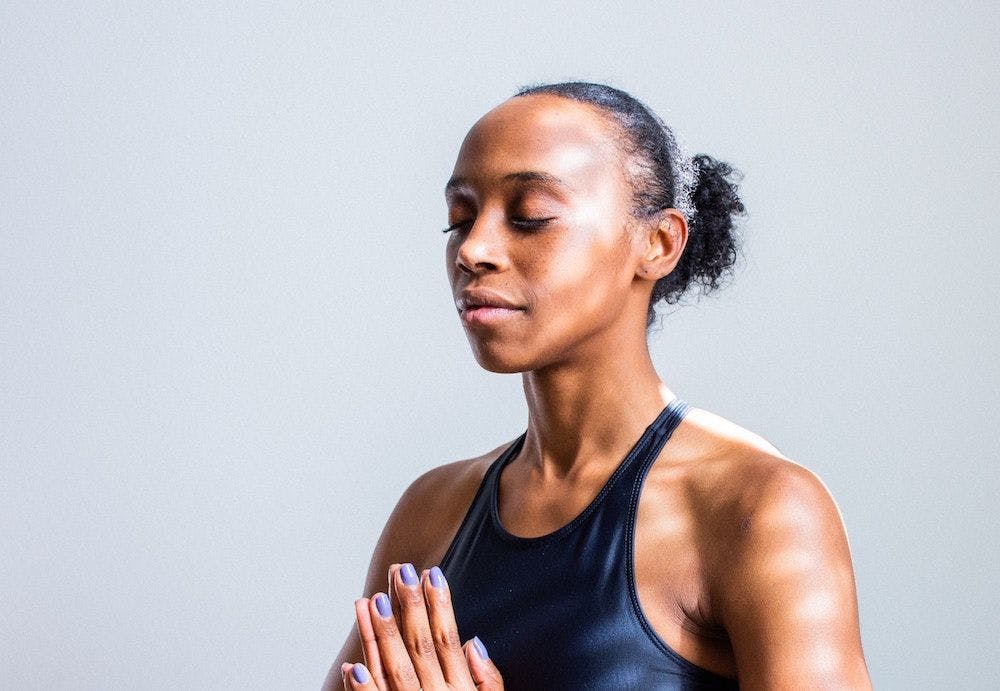
Do you struggle to switch off every time you try to meditate? Don’t despair. These useful tips will help you reach a state of zen in no time
We’re led to think that meditating should be simple. You just sit there, relax, and think of nothing, right? Well, the truth is a bit more complicated than that, and many of us can find it difficult to switch off the internal chatter in our minds. After all, meditating encourages us to do something that we’re not used to. All day long our brains are working in overdrive – reminding us to pay that bill, pick up the shopping and send those emails – and sitting still and quiet can feel very alien to us. And that’s if we even manage to carve out 15 minutes of our day to dedicate to it.
So, what’s the answer? Meditation instructor Carolyne Bennett says it’s important to stick with your practice – even if you find it tricky at first.
“People think that meditating is challenging for many reasons, and as a result give up too soon,” she says. “Perhaps there are too many distractions around you, your mind is leaping from one thing to another, or you convince yourself that you’re no good at it and question why you’re doing it in the first place. But the benefits of meditation are accumulative, and the more you sit, the more your mind will become quiet and peaceful.”
If you need a helping hand, try one of the below techniques – they’re ideal for beginners, and will soon help you to enjoy a sense of calm.
Opt for a guided meditation
These are a beginner’s best friend. Available on apps such as Headspace, Calm, and Buddhify, guided meditations allow you to tune in to an instructor’s voice, and follow their directions as they guide you into a meditative state.

“Our minds love having something to do, and hearing a set of soothing instructions gives you something positive to focus on,” Carolyne explains. “Guided meditations provide an amazing, magical experience by taking you on a journey. As with all meditations, if your mind wanders, remember that’s OK, because that’s what they’re designed to do. Once you’ve become aware that your thoughts are elsewhere, just bring your attention back to the guided meditation, and continue where you left off.”
Count 100 breaths
This is an ideal technique to improve your concentration, and encourage your mind to be still. It involves counting down from 100 with each breath until you reach zero, and allows you to notice the steady rhythm of your inhalations and exhalations.
As you try this method, pay attention to your body’s reaction as you take in and release air. Notice the sounds you make, and how it feels. Breathing is like an anchor for many of us, and settling into this practice can ground you, and create a deep sense of relaxation.
This is also a useful practice if you’re feeling anxious at any point in your day – simply counting 10 or 20 breaths can help release stress quickly and efficiently.
Complete a body scan
Rather than switching your brain off completely, this type of meditation aims to connect your body and mind together, and put them in sync. It involves mentally scanning your body from the top of your head to the tips of your toes, slowly paying attention to the sensations that arise as you do so, and noticing any areas of discomfort.
“A body scan meditation is very restorative and healing, and can help you to relax at a deep level,” Carolyne says. “It’s best to try to stay awake for this, to really appreciate the benefits, but if you do nod off then don’t worry.”
You can easily centre your practice around some relaxing music, the sounds of the ocean, or even just a ticking clock
Use a timer
While seasoned meditators can come in and out of a meditative state with ease, and feel confident in knowing when their session has naturally come to its end, beginners often struggle with this point – this is when an alarm can be handy. Set a timer for a certain number of minutes (it doesn’t have to be long – even five minutes is a good start) and then relax into your practice knowing that time won’t become a distraction.
Focus on your senses
As Carolyne tells us, sensory-based meditations are great for helping you become aware of the current moment. “They bring you out of your head and into the present by grounding you in your body, and relaxing your nervous system,” she says.
Try it yourself by choosing one of your senses to focus on. Sound is perhaps one of the most obvious choices, and you can easily centre your practice around some relaxing music, the sounds of the ocean, or even just a ticking clock. You can also follow the same principle with smell (by burning incense or essential oils), touch (by holding some fabric in your fingers or massaging your body with your hands), or sight (by staring at a flickering candle).
And if you’re still struggling…
Don’t beat yourself up. Meditation has many benefits, but it’s a skill that requires practise and time. Enjoy the peaceful moments, and seek extra guidance through meditation apps or classes.
Carolyne Bennett is a certified meditation and mindfulness instructor, NLP practitioner, and advanced Law of Attraction coach. Find out more by visiting carolynebennett.com

